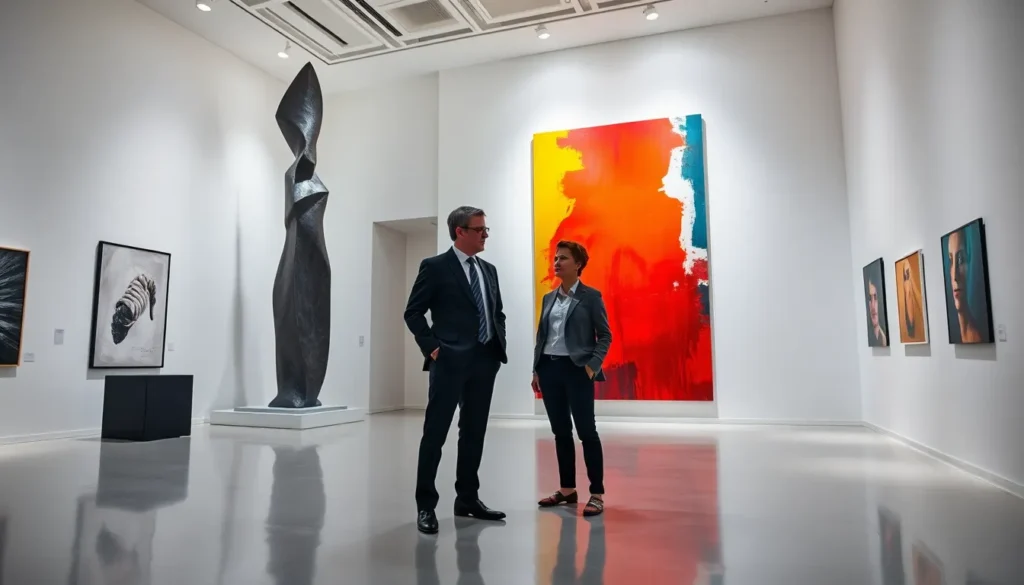In a world where avocado toast and artisanal coffee reign supreme, lifestyle inflation sneaks up like a ninja in the night. One minute, she’s enjoying a simple meal, and the next, she’s upgrading her brunch to bottomless mimosas. It’s easy to get caught up in the whirlwind of “treat yourself” culture, but every indulgence comes with a price—literally.
Cutting lifestyle inflation isn’t about living like a monk; it’s about finding balance. By keeping a close eye on spending habits, it’s possible to enjoy the finer things without breaking the bank. Embracing a few smart strategies can help anyone dodge the pitfalls of overspending while still savoring life’s little pleasures. So, let’s dive into how to keep that lifestyle inflation in check and ensure financial freedom doesn’t slip through the cracks.
Table of Contents
ToggleUnderstanding Lifestyle Inflation
Lifestyle inflation refers to the tendency to increase spending as income rises. This phenomenon can lead to unsustainable financial habits, often without individuals realizing it.
What Is Lifestyle Inflation?
Lifestyle inflation occurs when people enhance their spending on non-essential items as their income grows. It manifests through upgraded vehicles, extravagant dining experiences, and more frequent luxury purchases. Small changes in spending may seem harmless initially, but they can accumulate over time, impacting overall financial health. Many individuals find themselves in a cycle where increased earnings lead to proportional increases in expenses, leaving little room for savings or investments.
Causes of Lifestyle Inflation
Multiple factors contribute to lifestyle inflation. Social pressures play a significant role, as peers often influence spending habits. Advertising also creates a desire for new products, leading to impulsive purchases. Additionally, the pursuit of status can drive individuals to acquire possessions that signal success. Convenience becomes another factor; easy access to credit encourages overspending. Overall, understanding these causes helps individuals recognize their spending patterns and initiate changes to curb unnecessary expenses.
The Importance of Cutting Lifestyle Inflation
Cutting lifestyle inflation plays a crucial role in achieving financial stability. It allows individuals to enjoy their earnings while ensuring they do not fall into unhealthy spending patterns.
Financial Freedom
Financial freedom begins with conscious spending choices. Recognizing lifestyle inflation empowers people to make informed decisions about their expenses. Enhanced savings provide security during emergencies and opportunities for investment. Balancing enjoyment and financial responsibility creates a firm foundation for future goals. Individuals may find that cutting back leads to reduced stress and improved mental well-being. Financial control fosters an environment where they can strive toward long-term aspirations without the weight of unnecessary debt.
Long-Term Wealth Building
Long-term wealth building hinges on disciplined financial habits. Investing wisely becomes more attainable when individuals resist the urge to elevate spending alongside income. Saving consistently, even small amounts, can lead to significant financial growth over time. Wealth accumulation requires patience and strategy. Individuals committed to cutting lifestyle inflation often discover enhanced capacity for investments, contributing to retirement accounts or real estate. The focus shifts from immediate gratification to sustainable financial growth, enabling them to weather economic fluctuations more effectively.
Strategies for Cutting Lifestyle Inflation
Cutting lifestyle inflation requires intentional strategies and consistent habits. Implementing these strategies supports sound financial management.
Mindful Spending
Mindful spending involves recognizing needs versus wants. Individuals can develop awareness by tracking expenses for a month. Writing down every purchase aids in identifying unnecessary spending patterns. Choosing to prioritize essential items cultivates better financial habits. Setting limits on discretionary spending helps curb impulse buys. Evaluating choices before purchasing creates a mindful approach that contributes to long-term financial health.
Setting Clear Financial Goals
Setting clear financial goals provides direction for spending decisions. Establishing specific savings targets fosters accountability and motivation. Using the SMART criteria (Specific, Measurable, Achievable, Relevant, Time-bound) helps refine these goals. Regularly reviewing and adjusting goals maintains focus on financial priorities. Creating a timeline for achieving milestones inspires progress. Knowing the purpose behind each financial target enhances discipline in spending habits.
Living Below Your Means
Living below your means creates a buffer for unexpected expenses. Avoiding lifestyle upgrades when income increases builds long-term security. Keeping financial obligations reasonable ensures room for saving and investing. Simple lifestyle choices, such as cooking at home or choosing affordable entertainment, contribute to this approach. Practicing contentment with current resources fosters a healthy relationship with money. Maintaining financial discipline enables individuals to weather economic uncertainties effectively.
Common Mistakes to Avoid
Avoiding lifestyle inflation requires being aware of common pitfalls. Recognizing these mistakes enables individuals to maintain financial responsibility while enjoying their earnings.
Keeping Up with Peers
Keeping up with peers often leads to unnecessary expenses. Spending habits can shift dramatically when they compare lifestyles with friends and neighbors. Individuals may feel pressure to buy new gadgets, wear trendy clothes, or dine out frequently, driven by the desire to appear successful. Awareness of this social influence helps people make more informed choices. Instead of succumbing to these pressures, they can focus on their unique financial goals. Tracking personal progress and enjoying simple pleasures also fosters contentment in one’s own financial path.
Ignoring Budgeting
Ignoring budgeting can derail financial stability. A budget serves as a roadmap for managing income and expenses effectively. Without a clear budget, individuals may overspend on non-essential items. Some may even overlook how minor purchases add up over time. Regularly reviewing a budget provides necessary insights into spending patterns. Setting limits on discretionary items simplifies lifestyle management. Individuals often find that consistent tracking reveals areas for improvement, allowing them to regain control over their finances. Prioritizing budgeting fosters financial discipline and supports long-term goals.
Cutting lifestyle inflation is essential for achieving financial stability and long-term wealth. By adopting mindful spending habits and focusing on personal financial goals, individuals can enjoy their earnings without falling into the trap of overspending.
Practicing contentment and living below one’s means fosters financial discipline and creates a safety net for unexpected expenses. Regularly reviewing budgets and tracking progress helps maintain accountability and encourages informed decision-making.
Ultimately, prioritizing sustainable financial growth over immediate gratification allows individuals to navigate economic fluctuations with confidence, paving the way for a secure financial future.













